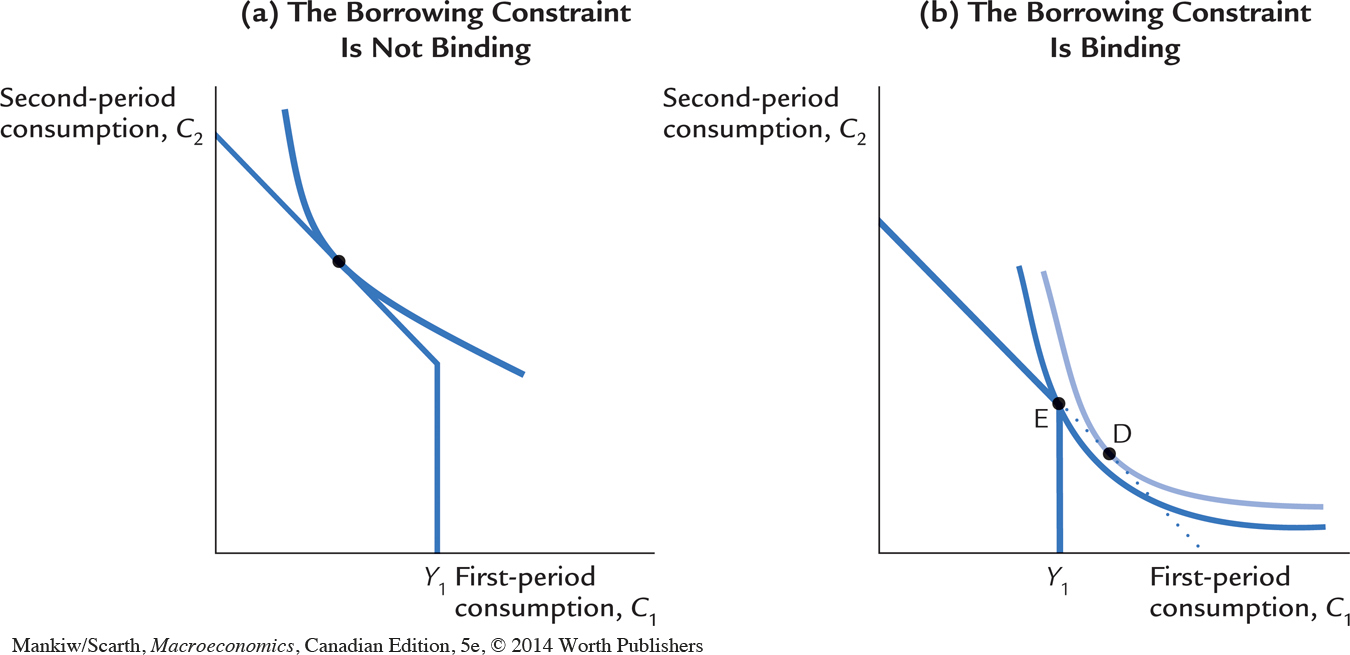FIGURE 17-9
 The Consumer’s Optimum with a Borrowing Constraint When the consumer faces a borrowing constraint, there are two possible situations. In panel (a), the consumer chooses first-period consumption to be less than first-period income, so the borrowing constraint is not binding and does not affect consumption in either period. In panel (b), the borrowing constraint is binding. The consumer would like to borrow and choose point D. But because borrowing is not allowed, the best available choice is point E. When the borrowing constraint is binding, first-period consumption equals first-period income.
The Consumer’s Optimum with a Borrowing Constraint When the consumer faces a borrowing constraint, there are two possible situations. In panel (a), the consumer chooses first-period consumption to be less than first-period income, so the borrowing constraint is not binding and does not affect consumption in either period. In panel (b), the borrowing constraint is binding. The consumer would like to borrow and choose point D. But because borrowing is not allowed, the best available choice is point E. When the borrowing constraint is binding, first-period consumption equals first-period income.

